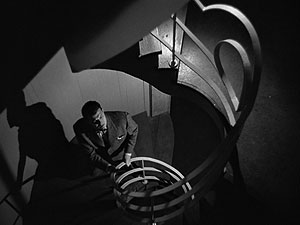In Whale Rider, by Niki Caro, a young girl named
Paikea proves her worthiness to her family and to herself. She has a driven
soul. She is determined. She enters life through a tragic situation yet shows
immense love to those around her. She is direct and energetic. She is wise and
powerful. She is Paikea.
Paikea, an adventurous spirit, stays true to
herself even though her grandfather, the main male role in her life, tells her
not to act the way she does. She stays true to herself by going against her grandfather
and learning the old ways of a chief which makes her a counter-stereotype. She
seeks out her uncle to teach her how to use the Taiaha, knowing it will make
her grandfather angry. Yet, she learns and she perseveres. Rubaiyat Hossain explains in
her article Female Directors, Female
Gaze:The Search for Female Subjectivity in Film “men and women don’t live the same reality. They
belong to different plains of power and are meant to see different versions of
the same images as they both stare at one single object, or truth, or reality”
(Hossain, 2011). Paikea knows in her heart that she can learn the
old ways of a chief but her grandfather refuses to think the same because of
Paikea’s gender. “The difference between a
young girl and boy is that the girl, as lack, is constituted as a site of negativity…”
(Hossain, 2011). This quote from Hossain emphasizes the different perspectives
of genders in the film and how Paikea’s grandfather does not see her as worthy
enough. Despite her grandfather not believing in her, Paikea perseveres and
proves how worthy she is.
Paikea empowers both women and men. She proves she
can do what a man does, if not better than a man. She not only makes her
grandmother and the local women proud of her accomplishments but she makes the
men in the village proud as well. She proves that females are strong. “When at
their best, movies give birth to new visions of female strength and freedom.” (Kord,
Krimmer. 2005) Whale Rider is a powerful film that paves the way for women to
empower those around them. It proves that sometimes you must go against those
you love the most in order to show your value. Even though going against one’s
loved ones is challenging and not the norm, it can make a huge difference and
change the negative opinions into positive ones.
In Whale Rider, Paikea takes her own path and does it for herself because she truly knows she can do it. In most films, the females do not take their own path; instead they follow that of others. They do not want to disobey. Whale Rider shows that you can succeed even with only one person on your side. Too many films show characters depending on others for success, but Whale Rider shows how success is what you make of it. Success depends on your ability to try. Whale Rider shows a different kind of cinema, one that is not normally portrayed but hidden. For instance, the premise of the film is that of tragedy, a family that was ripped apart. Most films have a complete family and tend not to show deep tragedy. It is often a breath of fresh air to see that a director is capturing real-life tragedy rather than picture perfect endings.
References:
Caro, N., Ihimaera, W. (2002). Whale Rider. New Zealand: South Pacific Pictures.
Kord, S., Krimmer, E. (2005). Hollywood. Canopy.
Hossain, R. (2011). Female directors, female gaze:
the search for female subjectivity in film. Retrieved from http://rubaiyat-hossain.com/2011/06/13/265/
















